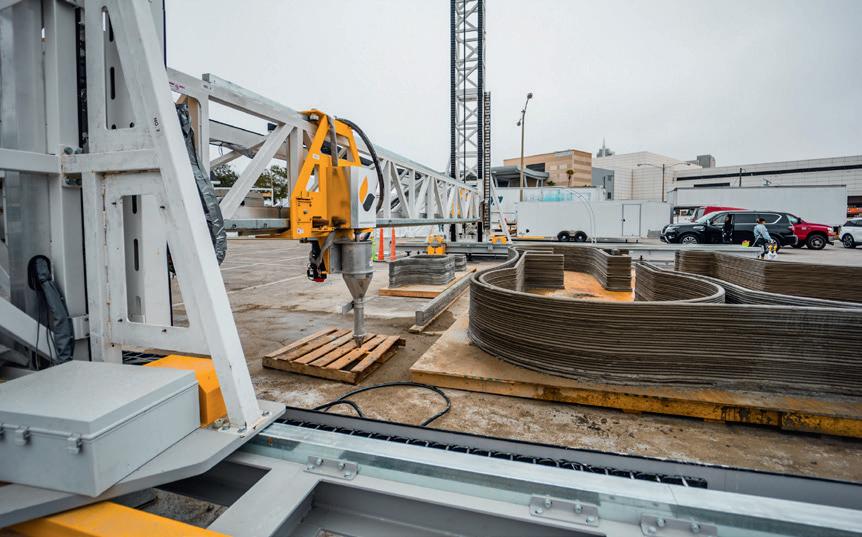
2 minute read
JUMP TO
Aerospace Business
The lightweighting of components is key to introducing new sustainable aircraft and spacecraft faster. 3D printed plastic parts can offer benefits in this area, reducing energy use and increasing the range of new aircraft. In November 2022, Stratasys announced that it applied simulation technology from Hexagon’s Manufacturing Intelligence division to capture the behaviour of its ultra-lightweight Antero reinforced polyetherketoneketone (PEKK) and its additive manufacturing (AM) processes.
According to Stratasys, the adoption of AM for structural components has remained slow due to the safety-critical nature of the aerospace industry and the regulations imposed on parts. In the original press release announcing their partnership, Hexagon and Stratasys said that by providing engineering teams the simulation tools to validate the materials that will achieve the required part performance, they are supplying the ‘missing link’ which will enable designers to make breakthroughs.
Foster Ferguson, Aerospace Business Segment Leader at Stratasys told TCT: “When you start to talk about the dimensional accuracy and printing to what the standards are looking for, hitting those specifications is really important. Whatever we’re testing, longevity, UV, heat, fatigue, whatever, characterizing that data and giving it to the engineer is critical. That’s why the Hexagon Digimat software is so important to the entire process. We want to able to give confidence with the technical proof on the back end of the print, that the tolerances have been met for the designs for the very unique spacecraft.”
Multi-scale models of Stratasys Antero 840CN03 and Antero 800NA have been added to Hexagon’s Digimat materials exchange ecosystem, with associated print parameters from Stratasys’ aerospaceready 3D printers. The models allow engineers to create digital twins that accurately predict how parts printed with the chosen material and approved aerospace-ready Stratasys printer will perform. According to Hexagon, the parts can be digitally simulated with real-world use-cases and certification tests before any physical prototypes are manufactured. The materials are already being used in aerospace engineering, with Lockheed Martin using Antero 840CN03 to create NASA’s Orion spacecraft docking hatch cover.
Speaking about the importance of lightweighted components, such as the ones designed using the simulation software, Ferguson said: “The lightweighting is very important, obviously to engineers who are always looking for ways to save pounds, every pound that you save in spaceflight is very significant
Stratasys,
in terms of fuel costs. Great aspects of the materials are that they are very fatigue resistant, very strong, and it has electrostatic dissipative properties.”
Ferguson then elaborated on the advantages of using simulation software: “Meeting specific requirements and regulations is certainly one of the benefits. There are different regulations in commercial travel and space travel. With space travel, you’re more concerned about overall safety issues and making sure that when this thing goes out there it’s going to meet the original design specifications and requirements a customer is asking for. In the past, we’ve gone through extensive testing on our machines, printing the coupons, testing the filaments and creating a data set that we can publish. We use it in the public forum so that engineers can use a data set and create an equivalency of their own data, based on that foundational data.”
Hexagon says that Digimat gives manufacturers the ability to design lighter parts that match metals in performance and avoid costly ‘overengineering’. The company first began working with Stratasys over a decade ago, and has since characterized high-performance thermoplastics such as ULTEM 9085, ULTEM 9085 CG, ULTEM 1010, and Nylon12CF to the Digimat software. According to Ferguson and Stratasys, the ability to use 3D printed materials such as PEKK to replace applications that would typically be produced from aluminum or steel, points to growing use in the aerospace industry.

Although their movie counterparts possess awesome superpowers, the 3D-printed Baby Yodas (at left) and Groots (right) that Olga Ivanova gave to visiting high school students are unable to do so much as dissipate electrical charge--but they’re still very









